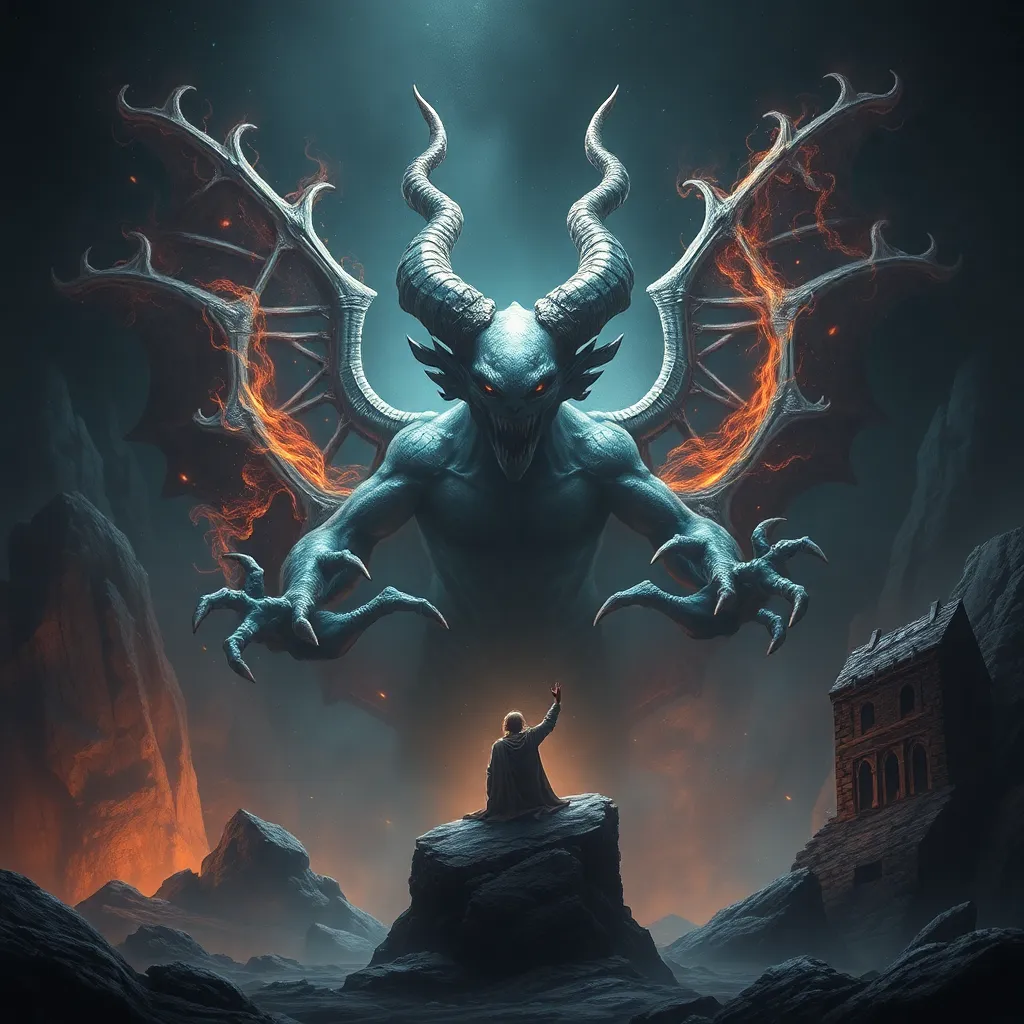The Hecatoncheires: A Source of Inspiration for Artists, Writers, and Thinkers
I. Introduction to the Hecatoncheires
The Hecatoncheires, often referred to as the “Hundred-Handed Ones,” are a fascinating and complex group of figures from Greek mythology. They are described as three giants—Briareus, Cottus, and Gyes—who each possess one hundred arms and fifty heads. Their origin can be traced back to the primordial entities of the universe, born from Gaia (Earth) and Uranus (Sky).
In Greek mythology, the Hecatoncheires hold significant importance as they are the offspring of the Titans. Their immense power and unique physical attributes make them pivotal players in various mythological narratives. This article aims to explore the influence of the Hecatoncheires across different fields, including art, literature, philosophy, and popular culture, highlighting their enduring legacy as symbols of chaos, power, and inspiration.
II. Mythological Background
The story of the Hecatoncheires is deeply intertwined with the broader narrative of Greek mythology, particularly during the Titanomachy—the epic battle between the Titans and the Olympian gods. Initially imprisoned by their father Uranus, the Hecatoncheires were later freed by Zeus to aid in the battle against the Titans. Their immense strength and the ability to unleash a barrage of attacks with their hundred hands proved instrumental in securing victory for the Olympians.
The symbolism associated with the Hecatoncheires is multifaceted. They represent the chaotic forces of nature and the raw power that can be harnessed for both creation and destruction. In this way, they embody the duality of existence—chaos and order, fear and awe—making them rich subjects for artistic and philosophical exploration.
III. Hecatoncheires in Art
The representation of the Hecatoncheires has evolved throughout history, leaving a significant mark on various artistic movements.
- Classical Art and Sculpture: In ancient Greek art, the Hecatoncheires were often depicted in reliefs and pottery, showcasing their monstrous forms and multitude of arms. These representations captured the awe-inspiring nature of their power.
- Renaissance and Baroque Influence: During the Renaissance, artists such as Michelangelo and Rubens drew inspiration from mythological themes, including the Hecatoncheires, to explore human emotion and the struggle between chaos and order.
- Modern Interpretations: Contemporary artists have also embraced the Hecatoncheires, using their imagery to comment on modern themes such as technology, social fragmentation, and the human condition.
IV. Literary Inspirations
The Hecatoncheires appear in various ancient texts, most notably in Hesiod’s “Theogony,” where they are introduced as primordial beings with immense strength. Their narrative has influenced countless writers and poets over the centuries.
- Ancient Literature: The Hecatoncheires are often referenced in works that deal with themes of power, conflict, and the human experience, serving as metaphors for uncontrollable forces.
- Modern Literature and Poetry: Contemporary authors utilize the Hecatoncheires to explore themes of identity, struggle, and the complexities of existence, often portraying them in a more nuanced manner.
- Thematic Significance: The presence of the Hecatoncheires in literature frequently symbolizes the internal and external battles faced by characters, enriching storytelling and character development.
V. Philosophical and Theoretical Interpretations
The Hecatoncheires have sparked numerous philosophical discussions, particularly regarding chaos and order, power dynamics, and existential thought.
- Symbol of Chaos and Order: The duality of the Hecatoncheires as both destructive and protective forces invites contemplation on the nature of existence and the balance between chaos and order.
- Power and Control: Their relationship with the Titans and Olympians opens dialogues about authority, rebellion, and the struggle for power in human societies.
- Influence on Modern Philosophy: The Hecatoncheires resonate with existential themes, prompting questions about human agency, the nature of freedom, and the confrontation with the chaotic aspects of life.
VI. The Hecatoncheires in Popular Culture
The cultural relevance of the Hecatoncheires extends beyond ancient texts and art, finding a place in modern entertainment and media.
- Films and Television: The Hecatoncheires have made appearances in various films and TV shows, often depicted as formidable adversaries or symbols of overwhelming power.
- Video Games: In the realm of gaming, the Hecatoncheires are commonly featured as boss characters or mythical challenges, drawing on their legendary strength and fearsome reputation.
- Graphic Novels and Comics: Their unique characteristics lend themselves well to graphic storytelling, allowing for visually striking interpretations that explore themes of struggle and chaos.
VII. Comparative Analysis with Other Mythological Figures
The Hecatoncheires can be compared with other monstrous figures across various mythologies, revealing both similarities and contrasts.
- Similarities with Other Figures: Like the Titans in Greek mythology or the giants in Norse mythology, the Hecatoncheires exemplify the archetype of the monstrous being, representing the untamed forces of nature.
- Contrasts with Heroes and Gods: Unlike the heroic figures who embody order and virtue, the Hecatoncheires’ raw power poses a threat to stability, highlighting the tension between chaos and heroism in myth.
- Universal Themes: Through their stories, the Hecatoncheires reflect universal themes of conflict, power, and the human condition, resonating across cultures and time.
VIII. Conclusion
The Hecatoncheires stand as a testament to the enduring power of mythology in inspiring creativity across various domains. Their legacy as symbols of chaos and strength continues to captivate artists, writers, and thinkers, serving as a source of inspiration and profound reflection.
In exploring the Hecatoncheires, we uncover the rich tapestry of human experience, revealing the complexities of existence and the interplay between chaos and order. As we continue to engage with these ancient figures, we recognize the importance of myth in shaping contemporary creativity and understanding our world.



